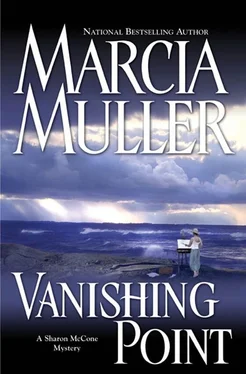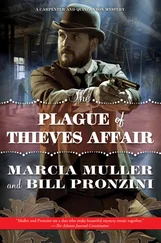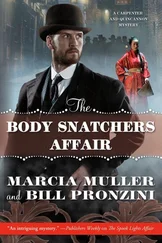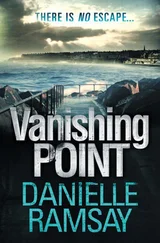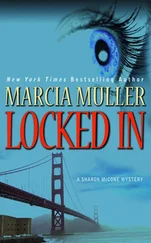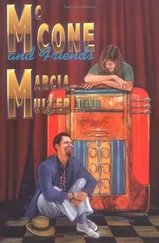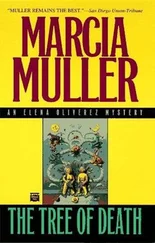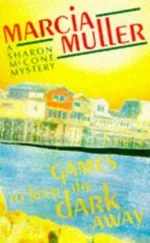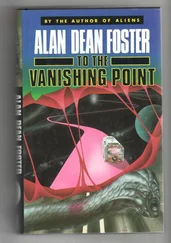I asked, “Did you tell Jennifer what you remembered?”
“God, no! Do you think I want to make her any more crazy than she already is?”
“So what d’you think?” Patrick asked as we drove back to the city. “The mother sneaked back into the house to leave Terry a birthday present? Or Terry just thought her father was lying about putting the toy there? Or somebody else left it?”
“Any and all of the above. I wonder if Jennifer has a similar recollection of her own birthday? Laurel was reading her The Wind in the Willows . Maybe Jennifer received a Mr. Toad.”
“You’ll have to ask her.”
“I intend to.”
When we got back to the pier, I told Patrick I wouldn’t be needing him anymore that day. Then I went to my office and called Jennifer Aldin.
“How are you feeling?” I asked her.
“Much better. I’m sorry I got so emotional yesterday.”
“No apology necessary; we were discussing an emotional issue. I met with your sister this afternoon, and we went over her recollections of your mother’s disappearance; tomorrow I’ll be heading down to Paso Robles to talk with your aunt and any of the other people involved in the case who are still in the area. I have a couple of additional questions for you before I go. Do you know what became of your mother’s postcard collection?”
“I think Aunt Anna has it. She took a lot of Mom’s stuff. Why?”
“I’m interested in seeing it, and anything else of hers. It may help me to understand what kind of a woman she was. Another thing: do you remember the first birthday you celebrated after your mother disappeared?”
“My eleventh? Not really. I blanked out a lot of that year.”
“You don’t remember anything unusual happening that day? A special present, maybe?”
“… No. I don’t even remember if I had a party. I doubt I did. Mom organized great birthday parties, but I can’t imagine Dad or Aunt Anna doing that. But my birthday was ten months later. Why are you interested in it?”
“I’m trying to put events in context.” Vague replies involving words such as “context” and “nuance” and “subtext” have stood me in good stead over the years.
Quickly I ended the conversation and went down the catwalk to Derek and Mick’s office. Mick had gone home-it was after six-but Derek remained at his desk, hands poised over his keyboard. As I stepped through the door, he hit the print command with a flourish and swiveled around.
“Shar!” he exclaimed, looking startled. “I just e-mailed you my file, and it’s printing out.”
I sat down on Mick’s chair and propped my feet on the bottom shelf of the workstation. “How many people were you able to find current addresses for?”
“Most of them. A few have died, a few are untraceable, but the others aren’t far from where they were twenty-two years ago. I backgrounded all but two of them and can finish up tonight if you need me to.”
“Let me look at the list first.”
The printer clicked and whirred and clattered on, sliding out pages. When it shut off, Derek put them in order and handed them to me.
Mary Givens, the neighbor who had been close to the Greenwood family, had died five years ago, but Laurel’s best friend, Sally Timmerman, was still at the same Paso Robles address, as were Roy Greenwood’s dental assistant, the pastor of St. John’s Lutheran Church, and the printer who had produced Laurel’s greeting cards. Jennifer and Terry’s regular babysitter had married and moved to nearby Templeton. Bruce Collingsworth, chief of the Paso Robles Police Department at the time, was deceased, but the detective who had handled the case was still on the force. Jacob Ziff, the Cayucos man who had stopped to chat with Laurel at the overlook where she was painting, was listed at an address on Studio Drive in that town, but the Sea Shack restaurant had gone out of business in the early nineties, and its staff had scattered. One of the dogwalkers who had spotted Laurel in Morro Bay was still living there; the other was untraceable. Derek had backgrounded all the individuals except for Jacob Ziff and the Morro Bay man.
Not bad, given the length of time that had passed. Tomorrow I’d fly down to Paso Robles-fortunately, Hy had taken a commercial flight to San Diego so the Cessna was free-and start with the maternal aunt, Anna Yardley, then talk to the other people there. They would probably suggest still others I might interview. I like to think of the initial inquiries in this type of investigation as pebbles dropped into a pool of water: concentric circles spread out around them, each bringing you into contact with people who knew the subject in different ways and bring different perspectives to the case.
Tomorrow afternoon, I’d drop the first pebble.
AUGUST 18
I put the Cessna into a descending turn and looked out its left window at the lower Salinas Valley. Narrow, as California valleys go, it was bordered to the east by the stark Gavilan Mountains and to the west by the more verdant Santa Lucias. Highway 101 ran more or less straight through it, paralleled by the Salinas River, its waters winking through the trees that lined its banks. King City, which I’d passed over some minutes before, spread to the north along a maze of railroad tracks, and below me the little farm town of San Ardo nestled among well-cultivated fields and vineyards.
To the south, however, the landscape changed abruptly. Oil wells peppered the pockmarked terrain and barren hills rose around them, crowned by holding tanks. I spiraled closer, saw the rocker arms of the wells moving up and down, like the heads of giant insects boring into the earth’s core. An image of its essence being sucked dry put a chill on me. Quickly I pulled up into a wide climbing turn, then headed south again. The Paso Robles Municipal Airport lay only a few miles away; with any luck, the rental car that I’d reserved would be ready for me.
The town hadn’t changed much since those pit stops I’d made during college. The drive-in wasn’t an A &W anymore, but it was still in operation. The Paso Robles Inn looked as if it hadn’t changed since it was built in the late 1800s. I saw no evidence of earthquake damage, other than scaffolding around a couple of boarded-up storefronts. To familiarize myself, I drove the length of Spring Street, the main arterial, then turned back toward the central business district, where I found a coffee shop and ate lunch while pinpointing addresses on a local map.
My first stop was on Chestnut Street, which paralleled Spring three blocks to the west. In the middle of a row of California-style bungalows shaded by tall trees, I found the Greenwoods’ former home: beige stucco with green wicker furniture crowding its small porch and wind chimes suspended from the eaves. I pulled to the curb and idled there, trying to get a sense of the lives that had gone on in this place twenty-two years ago. But too much time had passed; the house was probably not even the same color now, and who knew what other alterations had been made. When a curtain moved in a front window and a woman looked out, I took my foot off the brake and pulled away.
It was time for my interview with Anna Yardley. As I drove to Olive and Tenth streets, I reviewed what Jennifer Aldin and Terry Wyatt had told me about their maternal aunt. A retired insurance broker, Anna Yardley was unmarried and lived in the home where she and her sister Laurel had grown up. She’d spent little time with Jennifer and Terry prior to their mother’s disappearance, but afterward assumed a stern presence in their lives. “Warm and fuzzy was not Aunt Anna’s thing,” Terry had commented. “Her big sentimental gesture toward each of us was the gift of a thousand-dollar whole life policy-on which she probably collected the commission-when we graduated from high school.”
Читать дальше
